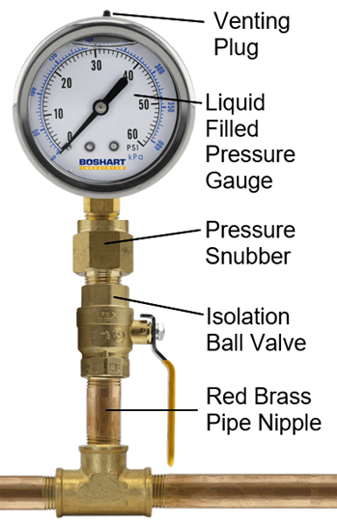Should I install an isolation valve with my pressure gauge?
 It is recommended that isolating valves be fitted with a pressure gauge for a couple of reasons. Firstly, the installation of an isolation valve allows you to easily maintain or replace the pressure gauge. You can simply close the valve, isolate the gauge, and remove the gauge without the need to interrupt your process.
It is recommended that isolating valves be fitted with a pressure gauge for a couple of reasons. Firstly, the installation of an isolation valve allows you to easily maintain or replace the pressure gauge. You can simply close the valve, isolate the gauge, and remove the gauge without the need to interrupt your process.
Installing an isolation valve can also be beneficial if your system experiences frequent pressure spikes or overpressures. If it is common for your system to have pressure surges at start up, for example, you can close the isolation valve and protect your pressure gauge. Opening the isolation valve after start up protects the gauge from any water hammer that may occur.
If your gauge is repeatedly exposed to pressure spikes and overpressures, it can become damaged and will no longer read pressure accurately. You can also keep the isolation valve closed, only opening it when you need to check the pressure of your system, in order to protect the gauge from frequent pressure surges.
The isolation valve should always be opened or closed slowly to avoid abrupt pressure changes from being applied to the pressure gauge.
Additional Resources:
https://support.boshart.com/are-pg-series-pressure-gauges-rated-for-a-maximum-overpressure-situation
https://support.boshart.com/what-are-the-applications-for-a-pressure-snubber
